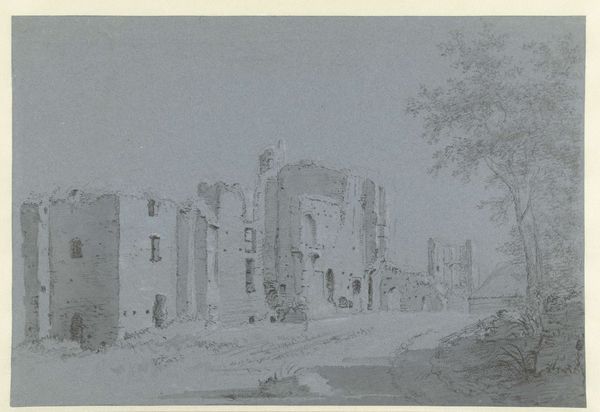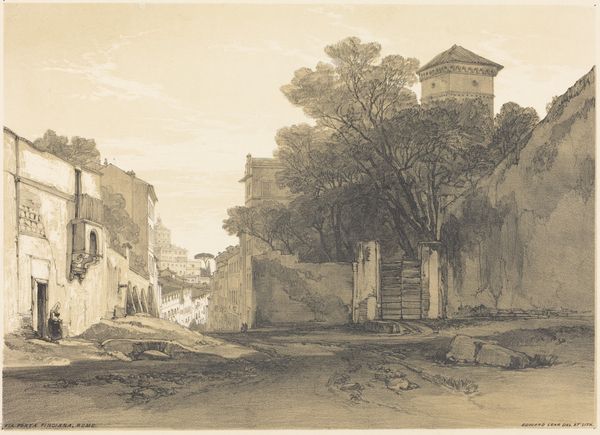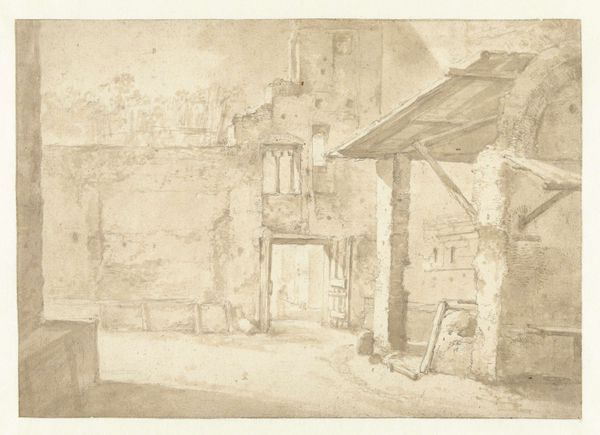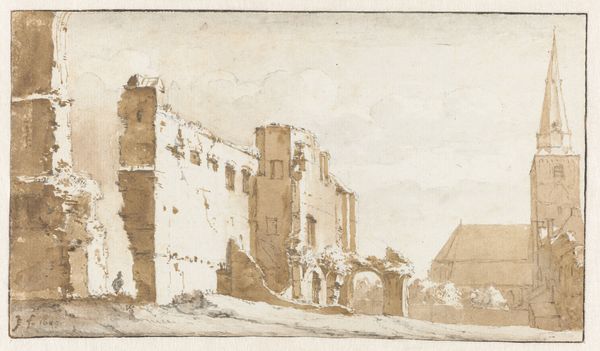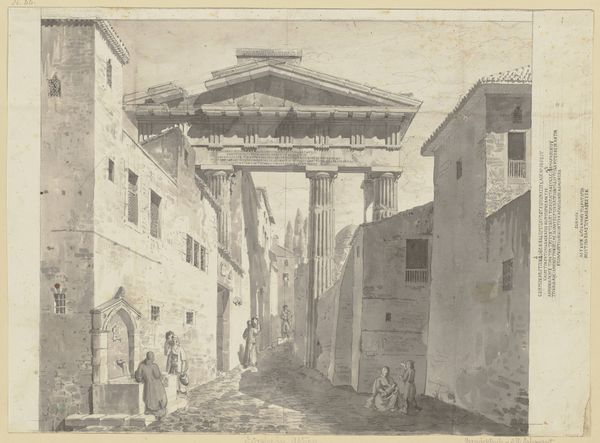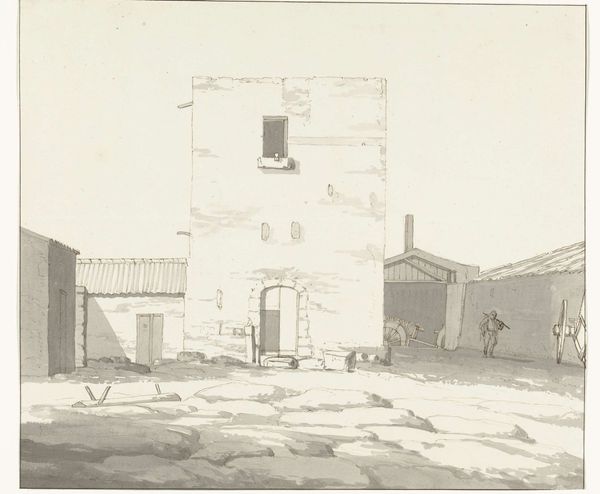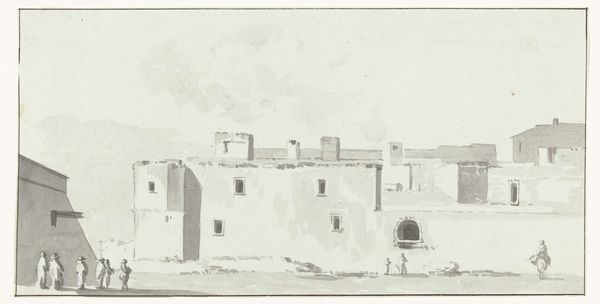
drawing, print, architecture
#
drawing
# print
#
arch
#
academic-art
#
street
#
architecture
#
realism
Dimensions: Sheet: 11 1/4 × 14 13/16 in. (28.6 × 37.6 cm)
Copyright: Public Domain
Curator: Welcome. Let’s observe this captivating piece by Thorald Læssøe, titled "A Sunny Street at Tivoli." It’s a drawing from 1846 and resides at the Metropolitan Museum of Art. Curator: Yes, it is compelling. The immediate impression is the stark contrast. The deep shadows against the sunlit walls create an almost theatrical effect, heightening the architectural forms. Curator: Absolutely, and what about thinking about it as academic art with realistic features? Læssøe chose drawing—presumably pencil and wash—as his medium, lending itself to a certain immediacy, a way of capturing the light and structure rapidly, before it shifts. It gives it this "snapshot" aesthetic. Curator: The strategic placement of the architecture along the street establishes a series of visual weights, doesn't it? The geometric progression of light to shadow pulls our eyes along this journey; it makes the street less of a mere backdrop and more a protagonist. Curator: Precisely! Considering it’s 1846, one wonders what a Danish artist was doing in Tivoli. What social circles was he moving in? Did this street bear any significance in the social hierarchies, and what are those stairs for—leading up into an uncertain darkness, but at the core for its structure? It’s this constant need for space. Curator: Good points! Looking at it more formally, Læssøe doesn't seem intent on precise photorealism. It’s how these simplified architectural forms give such a convincing feel. I think of classic formalism. Curator: The simplicity serves a material purpose too, the work reflects the social implications; who inhabited these spaces, how the inhabitants are related to Læssøe? It's like the print served its practical role by capturing such fleeting views and telling so much beyond lines and light. Curator: Indeed. It reveals how closely our visual reception intertwines with art’s making. That being said, what it shows is something like purity of form emerging. Curator: A final thought? Despite the differing approaches, maybe it just highlights how the material choices ultimately shape our visual encounter with it. It makes me wish I could jump in a time machine and see him making this piece. Curator: It's a piece that reminds us how simple tools wielded consciously make timelessness into pure architectural aesthetic, wouldn't you agree?
Comments
No comments
Be the first to comment and join the conversation on the ultimate creative platform.
